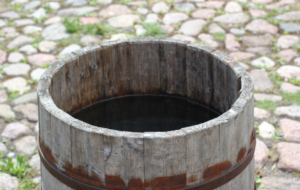Rainwater can be collected with existing structures. Rainwater can be harvested as soon as it touches the roof or ground. Moreover, it can be collected from the roof or garden. To do so, you can follow some helpful tips at https://www.letsrenovate.com/2021/04/20/6-tips-for-collecting-rainwater/. Stored rainwater can be used for industrial, domestic, and agricultural purposes. Also, rainwater can be used as drinking water as long as it has passed through a filtration system. Talking about the benefit, you can use rainwater to reduce groundwater consumption. Here is a simple guide to rainwater storage.

How to Collect Rainwater
Rainwater can be harvested without the need for additional structures. This is because rainwater can be captured through your roof and drainage system. If you want to capture rainwater on an industrial scale, you may need additional equipment. You can store rainwater in large water tanks or rain barrels after collection. These large water tanks can be used as a backup water source for your household needs. Many farmers and industrialists use this energy and environmentally friendly methods. Not only does this allow us to use more natural resources, but it also reduces the overall cost of farming and business. Therefore, rainwater harvesting is the best and most sustainable way to use available resources.
Two Most Efficient Ways to Collect Rainwater
Although the principle of rainwater harvesting is the same as before, there are differences in the scale and method of harvesting. Let’s examine these differences in detail to see how they affect water conservation.
Dry System
This method uses a wide range of rain barrels that are larger than others. Because of the large volume of water stored, more pipes and a more extensive collection area are needed. This is also called a dry system because the pipes empty into an underground tank and stay dry. This system is often used for large underground collection tanks. These tanks have a large capacity and do not need to overflow. You will also find that you can use less tap water because you have plenty of water available.
Rain Barrels
 This is a popular method that many homeowners use. The barrels are attached to the downspouts of the drains. The rainwater is collected in the barrel. The rain barrel can be reused or used for new purposes. The barrels are usually not very large, so these storage facilities provide less water for domestic use. This system is best suited for areas with a lot of rainfall. Even if it doesn’t rain regularly where you live, this system can be beneficial in many ways.
This is a popular method that many homeowners use. The barrels are attached to the downspouts of the drains. The rainwater is collected in the barrel. The rain barrel can be reused or used for new purposes. The barrels are usually not very large, so these storage facilities provide less water for domestic use. This system is best suited for areas with a lot of rainfall. Even if it doesn’t rain regularly where you live, this system can be beneficial in many ways.
Benefits of Having a Large Size Water Storage System
Rainwater tanks are often purchased on a budget. It’s a good idea to start with the cheapest tank and expand the system when you have more money. Another criterion is space. It doesn’t make sense to buy a large water tank if you don’t have enough space. It’s time to think differently. My friend has several smaller water tanks that are in the same room in her home. This includes the most beautiful garden in the area. Rainwater flows from her roof into one tank, but the overflow fills the next one because they are all connected. Each tank has a faucet at its base. During the long summer, run your garden hoses from one tank to the next. Even if your home is connected to the water supply, rainwater can be stored in tanks that you can use in your garden.